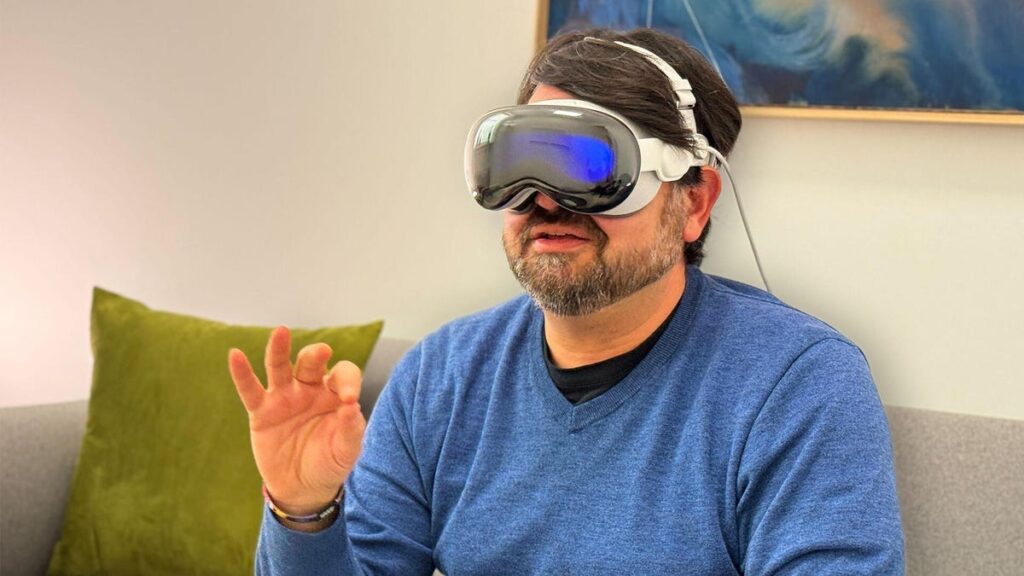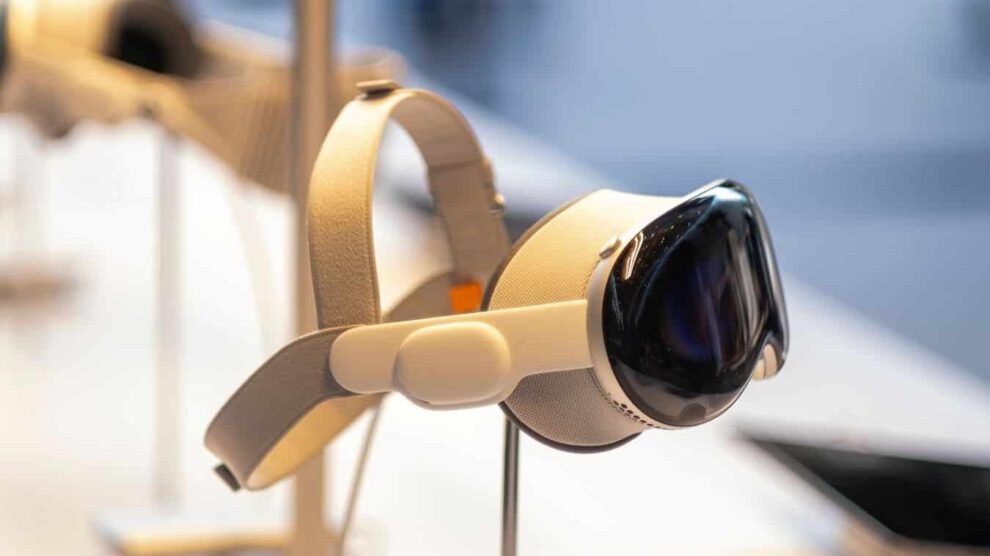The tech world is abuzz about Apple’s new Vision Pro headset and whether it represents the next evolution in computing and mixed reality experiences. As an ambitious first-generation product, the Vision Pro aims high but also has some limitations. In this in-depth blog post, we’ll unpack everything you need to know about the Vision Pro – from its standout features to potential drawbacks. Read on for the full scoop and decide whether this headset truly shapes the future of personal computing.
Introducing the Vision Pro Headset
First, let’s dive into what exactly the Apple Vision Pro headset offers. Officially unveiled in January 2023, the Vision Pro represents Apple’s first foray into the mixed reality space, blending both virtual reality (VR) and augmented reality (AR) capabilities.
Some key features and specs of this futuristic headset include:
- Sleek curved screens with ultra-high resolution and pixel density for seamless visuals.
- Innovative pass-through cameras that enable seamless AR experiences by blending digital elements with the real world.
- Spatial audio for immersive sound quality.
- Hand tracking and eye tracking sensors for intuitive control.
- Powerful on-board computing with Apple’s latest silicon for snappy performance.
- Ability to shift between AR and VR modes depending on use case.
With this advanced feature set, the Vision Pro aims to deliver next-level immersive experiences spanning gaming, media consumption, communication, creativity tools and more. The slick design houses complex technology in a compact form factor. But how does it fare as a viable computing platform?

The Vision Pro’s Strengths as a Computing Platform
Here are some of the standout benefits and strengths that position the Vision Pro as a compelling new computing platform:
Unmatched Visual Fidelity
The Vision Pro’s displays and optics are engineered for maximum visual fidelity. Each eye gets an ultra-high resolution screen with pixel density far exceeding any VR headset before. This creates jaw-dropping image quality whether navigating 3D virtual worlds or viewing 2D content.
Seamless AR Integration
With advanced passthrough cameras and spatial mapping, the Vision Pro delivers unprecedented AR integration. Digital elements are overlaid onto the real environment with stunning accuracy. Apple’s tight software integration also enables smooth AR apps.
Multimodal Interaction
Going beyond hands and eyes, the Vision Pro tracks your face, voice and more for multimodal interaction. This allows for more intuitive controls and experiences in both AR and VR settings.
All-Day Battery Life
While other headsets struggle with battery runtime, Apple promises all-day endurance on a single charge so you’re not tethered to an outlet. This is crucial for productivity and makes it more viable as an all-purpose device.
Established App Ecosystem
Given Apple’s massive app ecosystem, developers are lined up to create content for the Vision Pro. This gives it an established library compared to other emerging headsets.
Where the Vision Pro Falls Short
For all its strengths, the Vision Pro is still a first-gen product with some weaknesses and areas for improvement, including:
Limited Apps at Launch
Despite Apple’s ecosystem, the Vision Pro still has a limited selection of optimized apps and experiences so far. It will take time for developers to catch up and build rich supported content.
Steep Learning Curve
Mastering a complex new 3D interface with hand/eye tracking involves a learning curve. Less tech-savvy consumers may find the Vision Pro unintuitive at first.
Disruptive Form Factor
Strapping a screen to your face limits real-world visibility. Wearing the Vision Pro can disrupt multi-tasking and make some quick interactions clumsy.
Expensive Price Tag
With a starting price of $2,000, the Vision Pro costs several times more than an iPhone 14 Pro making it very pricey for average consumers.
Unknown Long-Term Comfort
While first impressions are strong, long-term comfort remains unproven until people use the headset for extended periods. Eye fatigue and neck strain are concerns.
Key Questions on the Vision Pro’s Future
Given both its promises and limitations, key questions surround the Vision Pro’s future potential. Here are some important unknowns:
Will app selection substantially improve?
More supported apps and use cases are needed to realize the Vision Pro’s full potential. How quickly with developers embrace this new platform?
Can Apple make AR mainstream?
Apple is betting big on AR, but consumer AR interest remains lukewarm. Does the technology improve enough to win over the masses?
Will wearability issues be resolved?
Can future hardware revisions shrink the form factor and address long-term comfort to make all-day wear feasible?
How will privacy concerns shape adoption?
With cameras and biometrics tracking your movements, privacy issues may deter some prospective buyers.
Does battery tech progress keep pace?
All-day battery life could regress if display and processing demands outpace battery improvements.
The Vision Pro: Exciting Potential, But Work in Progress
In summary, the Vision Pro marks a bold and promising foray into the next era of computing by Apple. It pushes boundaries with its immersive visuals, innovative AR implementation and intuitive inputs. But as pioneering first-generation hardware, it also faces limitations around supported apps, real-world integration, pricing and wearability.
The Vision Pro undoubtedly has exciting potential – but still needs refinement, app ecosystem maturity and UX polish to truly deliver on that promise. As a version one product, it’s an impressive glimpse of the future but not a fully evolved computing platform just yet. Given Apple’s resources and dedication to this space, future iterations could get closer to realizing that sci-fi dream.
The Vision Pro lays the groundwork for this Next Big Thing – but it may take two, three or more generations before the technology, apps and adoption align. Only time will tell whether the Vision Pro ushers in the next evolution of personal computing or remains a niche product for early adopters. But Apple has made its ambitions clear – the company is committed to making mixed reality computing mainstream.










Add Comment